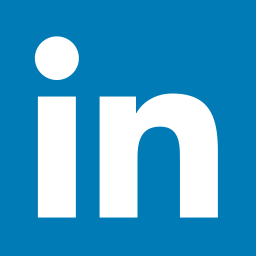Online Hours
Hours displayed in:Eastern Time (US & Canada)
About
Biology & Biomedical Sciences
Click here for Biomedical Engineering & Other Engineering
Website: dbbs.wustl.edu
Main School Email Address: dbbs-info@wustl.edu
Organized in 1973, the Division of Biology and Biomedical Sciences is a graduate educational consortium, which includes faculty affiliated with thirty-seven clinical and basic science departments in the School of Medicine and in the College of Arts and Science, all at Washington University in St. Louis. Division programs provide a broad interdisciplinary approach to graduate education. Students may choose from more than 450 faculty members for laboratory rotation and dissertation research mentors. The Division offers training in 12 programs that lead to the Ph.D. or combined M.D. /Ph.D. degrees, and Summer Undergraduate Research Programs. More information may be found at dbbs.wustl.edu.
Degrees/Programs Overview
The Division of Biology and Biomedical Sciences (DBBS) at Washington University in St. Louis offers exceptional doctoral training at one of the nation’s preeminent biomedical research centers. The DBBS is organized into twelve academic programs, each representing a different scientific area.
Prospective students apply to the Division rather than to an individual program. Students are admitted into a specific program but may change their Program affiliation as their interests develop. Faculty members from 30 plus departments across the university contribute to the admission, teaching and research training of the Division’s students. Each Program has its own steering committee to provide students with personal attention, guiding them and addressing their needs during the first years of training. Steering committee members are conversant with the broad range of opportunities available to the student pursuing a graduate degree at Washington University, and they work for a precise match of interest, aptitude, Program and course of study.
Each of the 12 Programs establishes its own requirements for earning the Ph.D. degree, and progress toward the degree is monitored by the Program steering committee. The Ph.D. degree is granted by Washington University’s Graduate School of Arts and Sciences.
Degrees Conferred & Other Programs: PhD, Post-Doctoral
12 PhD Programs
- Biochemistry
- Computational & Molecular Biophysics
- Computational & Systems Biology
- Developmental, Regenerative & Stem Cell Biology
- Evolution, Ecology & Population Biology
- Human & Statistical Genetics
- Immunology
- Molecular Cell Biology
- Molecular Genetics & Genomics
- Molecular Microbiology & Microbial Pathogenesis
- Neurosciences
- Plant and Microbial Biosciences
Application is available September 1 – December 1 at dbbs.wustl.edu.
Collaborative, Interdisciplinary Approach to Research
A collaborative, interdisciplinary approach to research and education is a hallmark of Washington University and the Division. As a university-wide consortium, the Division transcends departmental lines and removes traditional boundaries of scientific fields. Faculty and graduate students regularly cross disciplines, devising novel questions and approaches that might otherwise go unexplored.
Research & Labs
Graduate students in the Division are part of an elite research environment that includes one of the country’s top five medical schools*; top ten hospitals**; world-renowned researchers; and the legacy of 19 Nobel Laureates. Among the greats: Joseph Erlanger and Herbert Gasser, pioneers of neurophysiology; Carl and Gerty Cori, who explored enzyme regulation and whose lab trained six other eventual Nobelists; Arthur Kornberg, leader in understanding DNA replication, and Rita Levi-Montalcini and Viktor Hamburger, discoverers of nerve growth factor. Examples of outstanding work in the sciences at the University include the first faithful in vitro eukaryotic gene transcription, the use of transgenic plants to combat viral diseases, and investigations into neural development and brain mapping; including the creation of the first positron emission tomography (PET) scanner. The Genome Sequencing Center at the School of Medicine applied advances in gene mapping techniques to generate a comprehensive map of the human genome and contributed more than 20 percent of the draft sequence. The University’s tradition of inventive, insightful research continues at an unbroken pace with BioMed 21, I-Cares , MRCE and the Hope Center, to name but a few.
* U.S. News & World Report graduate program rankings
** U.S. News & World Report best hospitals rankings
Tuition & Other Financial Information
- Each student accepted into the Division is guaranteed a generous stipend, provided all academic standards are upheld.
- Tuition is provided for all full-time students in the Division for the duration of training, provided all academic standards are upheld.
- Many students hold national fellowship awards, such as those offered by the National Science Foundation.
- Funds are provided for students to attend and participate in a scientific meeting.
- Health, life and disability coverage are provided.
- Students in the Division enjoy access to all of Washington University’s educational, entertainment and recreational resources.
- The University’s MetroPass provides all students with free use of Metro-Link lightrail and Metro buses.
University History
Washington University is one of the nation’s best private universities committed to the promotion of learning—learning by students and by faculty. The transmission of knowledge, teaching, is central to the mission of Washington University, as is the creation of new knowledge, research. The faculty, composed of scholars, scientists, artists, and members of the learned professions, serves society by teaching; by adding to the store of human art, understanding and wisdom; and by providing direct services, such as health care. Both a world-renowned research center and a medium-sized, coeducational college with extraordinarily high teaching standards, the University comprises the College of Arts and Sciences and four professional undergraduate schools along with a variety of graduate programs.
Other Information
Current Division students may wish to explore additional pathways of study, as well as additional opportunities that are available. The pathways provide specialized courses of study that are undertaken as part of the student’s regular course work. The 10 Special Emphasis Pathways are:
- Cancer Biology
- Center for the Investigation of Membrane Excitability Diseases
- Cognitive, Computational & Systems
- Genetics & Genomics of Disease
- Imaging Sciences
- Infectious Disease
- Interface of Psychology, Neuroscience & Genetics
- Kauffman Entrepreneurship
- Markey Human Pathobiology
- Plant Sciences
School of Engineering and Applied Science
Engineering School Email: EngineeringGradAdmissions@wustl.edu
Biomedical Engineering- In partnership with our world-class medical school, our department emphasizes interdisciplinary, multi-scale training with a medical focus from top-notch faculty. Our main research areas are biomaterials and tissue engineering; cardiovascular engineering; imaging; molecular, cell and systems engineering; and neural engineering. Our department has more than 75,000 sq. ft. of state-of-the-art facilities in Whitaker Hall for Biomedical Engineering and Brauer Hall. We offer MS, MS/MBA, PhD and MD/PhD degrees.
Other engineering- based areas of study- Ranked among U.S. News and World Report's top 50 engineering schools, Washington University's School of Engineering & Applied Science invites you to consider the possibilities! Whether our PhD students are working in Biomedical, Mechanical, Electrical, Systems, Computer Science, Energy, Environmental or Chemical Engineering, their research typically revolves around three broad areas: medicine and health, energy and environment, and cyber security. By forming interdisciplinary academic and industry partnerships, our school's students seek to solve some of the greatest global challenges of the 21st century across these three areas of focus. We believe our convergence paradigm is unique in preparing students to work across as many disciplines as their passions will take them. We thank you for considering Washington University in St. Louis for your advanced degree.





